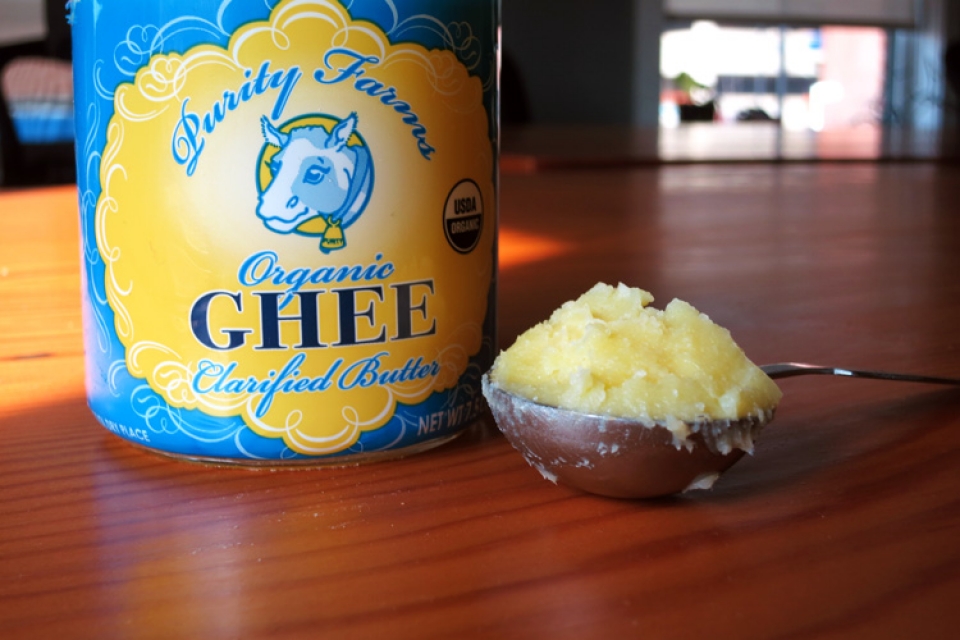Clarifying Ghee
You may have heard some rumblings about the benefits of ghee, or perhaps you’ve seen ghee on the shelf (you can find it in Aisle 2). But do you know what it is?
Ghee is clarified butter, meaning the oil has been separated from the milkfat. It is a concentrated source of the fats (mostly saturated) and the vitamins A, D, E, and K2 found in butter. It also is a good source of butyric acid, a saturated fat that helps the digestive system.
Ayurveda practice makes wide use of ghee. It is referred to as liquid gold. Ayuvedic medicine believes ghee increases your digestive fire, pacifies the pitta and vata doshas, increases longevity, and cleanses the blood tissue.
The process of clarifying has a couple of major benefits. First, it removes most of the lactose and casein proteins from butter, which makes ghee a good choice for people who can’t digest dairy well (however, if you are particularly sensitive, you may still react to ghee). Second, clarifying makes it shelf stable, so it will stay fresh (and spreadable!) for quite a while (at least several months) on the shelf. Lastly, ghee has a higher smoke point than butter and is more stable than olive oil (it can be heated up to 485 degrees F without creating harmful oxidized fats!), so it can be quite versatile.
Ghee can be used just like butter or other cooking oils. Try it spread on toast or pancakes, melted onto fresh popcorn, or used in place of oil or butter in any recipe. When scooping ghee out of the container, make sure the utensil is dry and clean. This will ensure that moisture doesn’t get into the jar (and cause spatter when cooking) and will guard against the ghee going rancid.
How to make ghee at home
What you’ll need:
1 pound unsalted butter – ideally organic and grass-fed, if possible.
Cheesecloth
A pint jar with lid
What to do:
Place the butter in a saucepan (ideally not a Teflon pan) and heat over medium heat. Once it is completely melted, turn the heat to low and simmer 10-15 minutes without stirring. It will start to make sound and become fragrant.
The butter will foam, then bubble, then foam again. Once it foams a second time and there are reddish-brown flakes of milk solids on the bottom of the pan, remove from heat. Allow to cool slightly.
Place cheesecloth over the mouth of your jar, leaving a bit of sag in the middle, and screw on the lid ring. Place the jar in a medium-sized bowl (to catch any spills) and carefully pour the ghee through the cheesecloth into the jar, squeezing out any extra liquid. Alternatively, you can line a fine mesh strainer with cheesecloth, strain the ghee through the cheesecloth into a bowl, and then transfer to a jar. Compost the curds.
Store covered in a cool, dark place.
